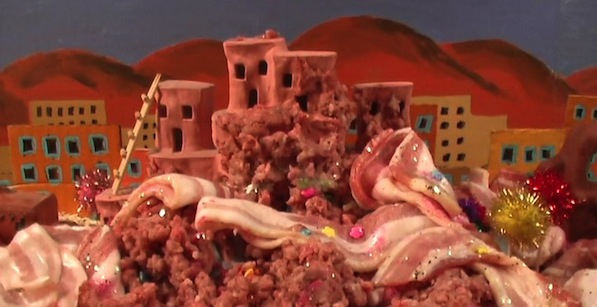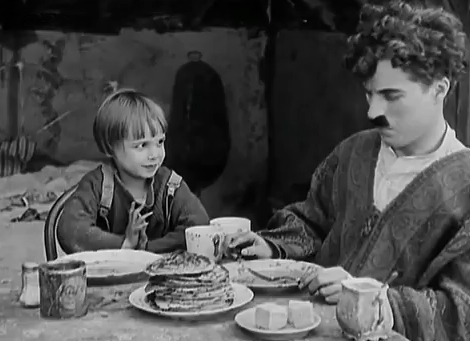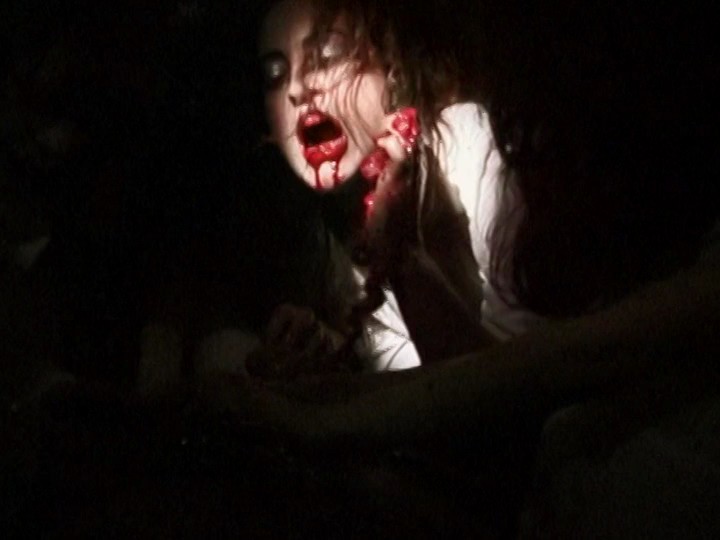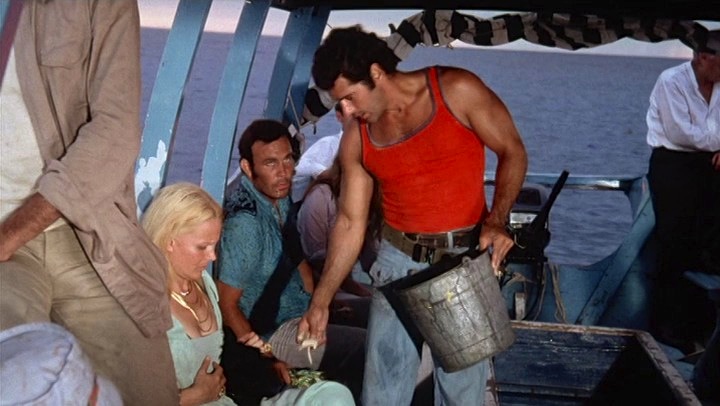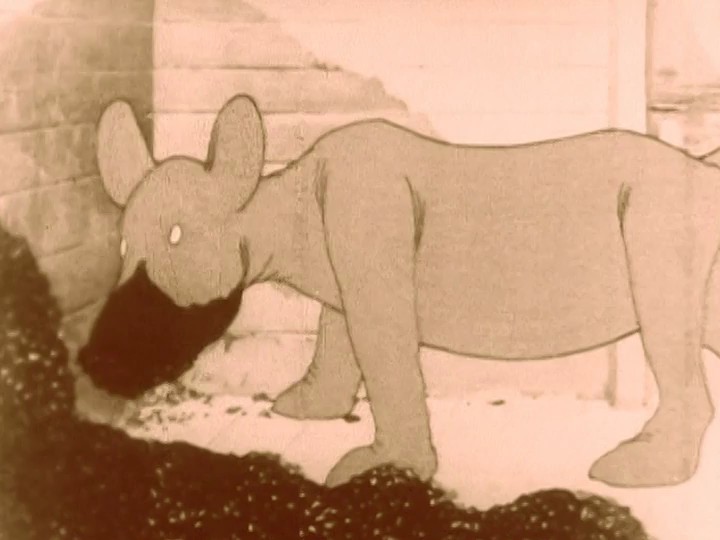It’s Thanksgiving in the United States, which means that in this portion of North America today, you have these choices: you can eat, you can cook or you can abstain entirely. This is an occasion for excess and it’s with that orientation that we look at movies that can only see the world as skinny or fat, starved or bloated, desperate or relieved—a perpetual Fat and Lean Wrestling Match.
Perhaps we owe Chaplin for a bit of our modern day food worship. His Gold Rush was the film that made hungry hallucinations about dinner guests seem altogether logical (even if Looney Tunes made it popular). Modern Times treats food like contraband—those characters would covet black-market hosiery less—and if you’ve seen The Kid, you know how pancakes can be transformed into buttery towers of high-carb devotion. Chaplin’s trademark Tramp character was intermittently destitute, a black-and-white fringe-dwelling everyman who fantasized about food; saw it as comfort, affection, providence. Food images shapeshifting and promiscuous: shoelaces were like spaghetti and any found object could transmogrify into another thing, invented by necessity, transformed for convenience. The world was always mystically, comically, poignantly crazy, and everything contributed to the jovial madness.
This distorted thinking projects resilience (Rock an infant to sleep in a hanging colander? Chaplin is so imaginative!), but what’s sweet in black and white may lose its sheen in color and the all-or-nothing view of the world can yield scarier results.
The teenage girls in Hold My Scissors eat men for dinner. (Is that a disorder?) Their ritual cannibalism is reminiscent of the gutting scene in Kenneth Anger’s Fireworks via a kind of decadence that lacks lust. These girls aren’t consuming their man to bring him closer, the meal a gift to an unseen master. To exalt their religious sacrifice, their unsavory buffet is reverently filmed.
The same can’t be said for John Moritsugu’s Pig Death Machine. Made just this year, the film is awash in the indie auteur’s trademark primitive punk aesthetics. In it, San Francisco criminals uncover and eat a bit of mystery meat and magically transform into Super Friends. Compared to this, cannibalism is wholesome.
“Mexploitation” maker Rene Cardona Jr. found a way to force a little neighbor-eating into his 1978 disaster movie Cyclone. A grindhouse title with heart of gold, Cyclone is built like an American Independent Pictures but has the moral aspirations of something like Towering Inferno. A grubby glass-bottom boat protects a mishmash of characters from a typhoon. Their tour boat becomes a rescue vessel when survivors of a plane crash and a fishing trip drift its way. With limited drinking water, a sub-par fisherman and no compass, it’s only a matter of time before they need to use their dead as bait. Even those not arguing this situation’s moral grey areas take pause: if the fish ate the sailor and you eat the fish, are you a cannibal? And what is TurDucKen? Think about it hard enough and you’ll have nightmares. (Viagra)
This is how people who pardon turkeys find vindication for their sacrifice, and maybe meat surrogates aren’t so bad. Tofurkey is popular enough, if not the only faux-flesh option. Rarebit is poised to make a comeback. Even John Goodman’s back-seat grease ball in Inside Llewyn Davis has a word to say about this brand of “toasted cheese sandwich.” No matter who mentions the throwback recipe, the consensus describes it as a meal with consequences.
Wallace McCutcheon and Edwin S. Porter were so inspired by the saucy sandwich (great with beer!) they animated their dinner demons. This seven-minute comic film begins with the live-action completion of the rarebit and the emptying of around nine bottles of stout (again, great with beer). When the drowsy diner crashes he imagines epic, shroomy cartoons. After that much booze it’s impressive the protagonist could dream at all. Perhaps we should have a higher opinion of the hallucinogenic cheesy bread, and our animated alter-egos should be wary.
Dreams of a Rarebit Fiend: The Pet (1921) is the fully animated, unofficial sequel to Porter/ McCutcheon’s 1906 short, and a bent metaphor for bad parenting. After having his fill at a posh bistro the husband dreams his wife adopts a meowing orphan-critter that grows as it eats, eventually dwarfing the buildings of the local metropolis. It eats and grows and eats and grows and in paces you can imagine the gas building up beneath the hallucination. We all know what it feels like to keep eating when you’re full. It’s better than begging at the side of the table.

